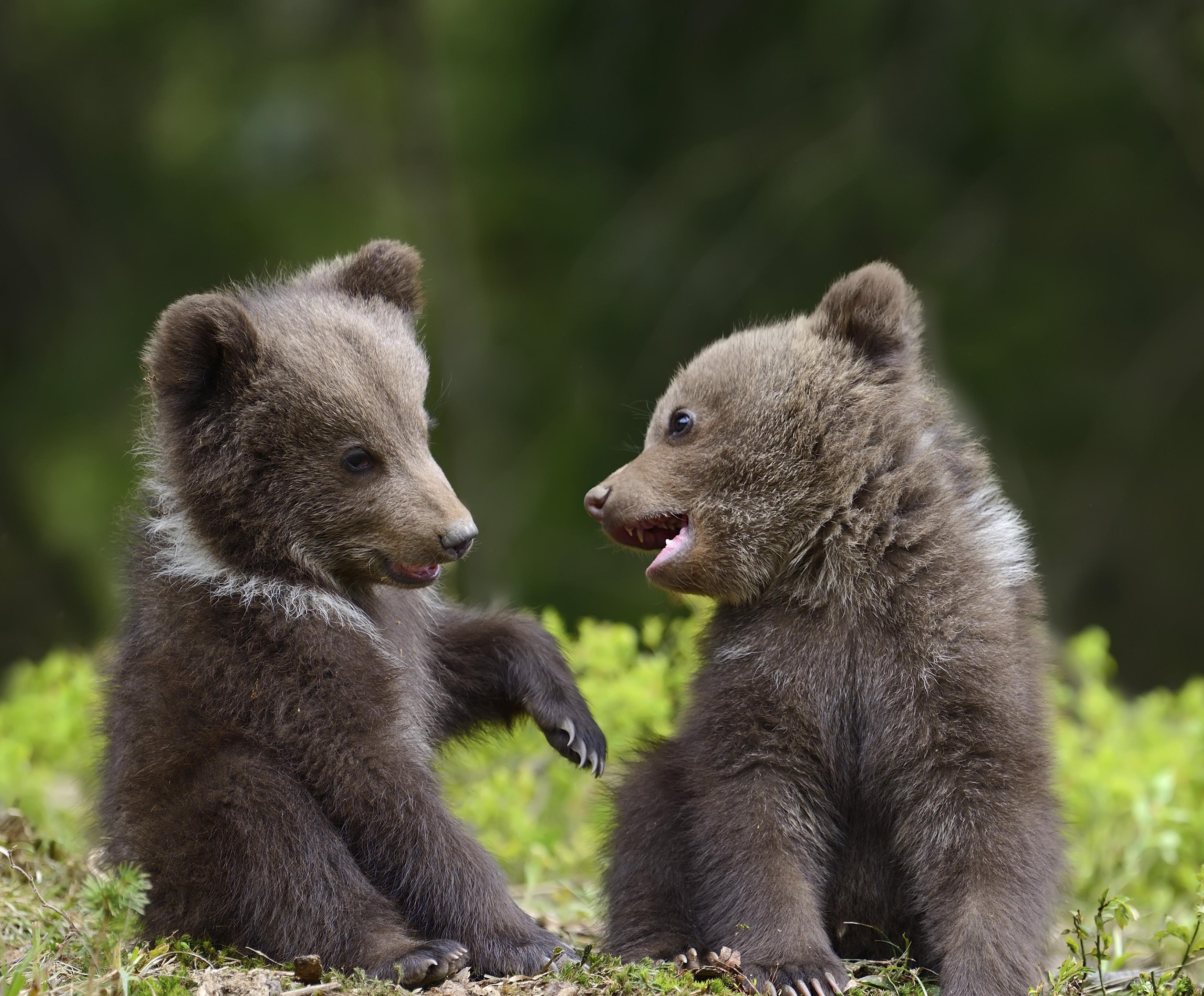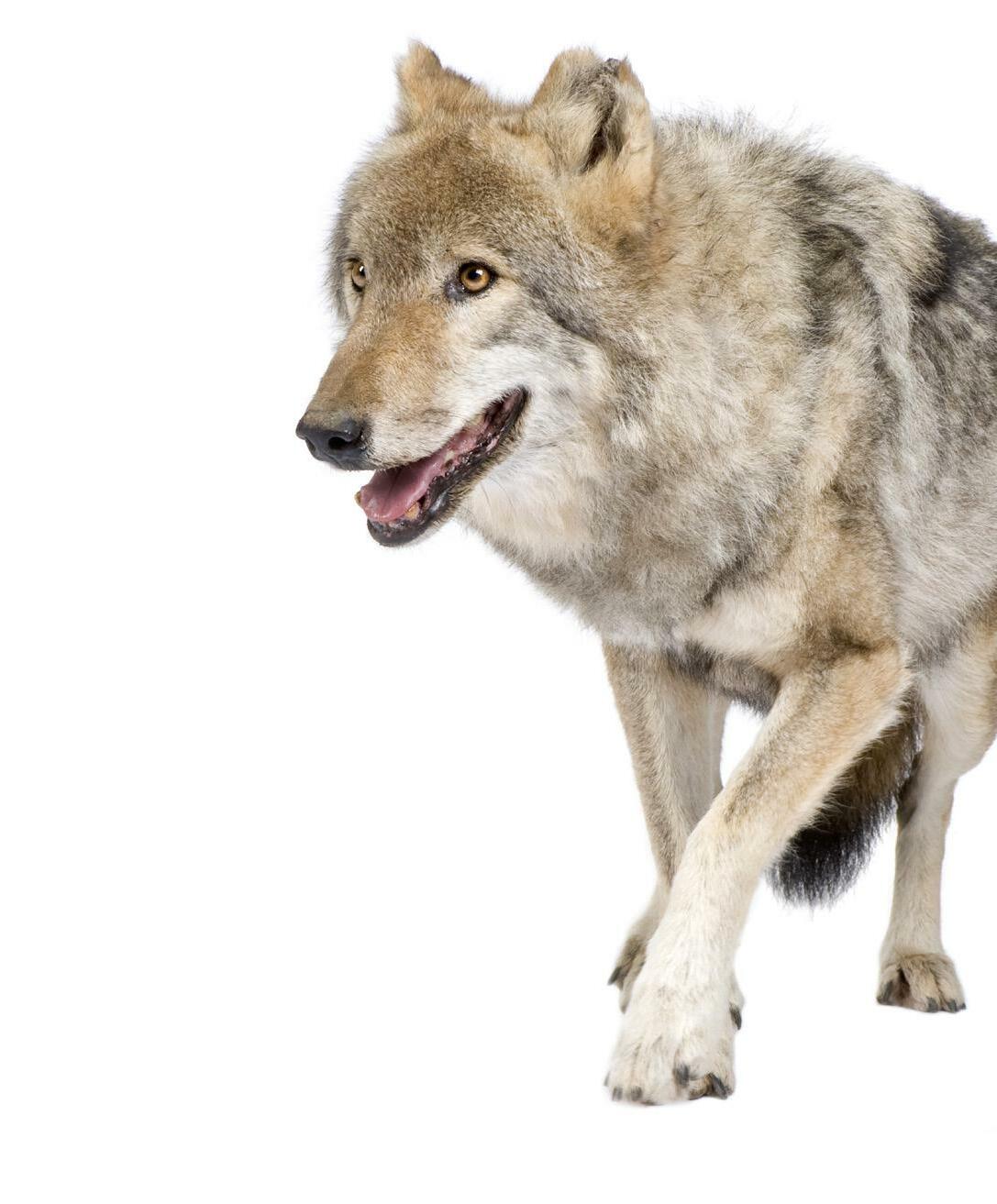
5 minute read
Finnish nature is ruthless
Written by roope Lipasti transLated by oWen F. Witesman
Brown bear cubs.
Advertisement
There may not be lions or poisonous scorpions in Finland, but we do have wild summer beasts.
Bears
Finland’s largest predator is usually encountered in the forest, although sightings are extremely rare. There are about 2,500 bears in Finland, with most of them in Lapland or on the eastern border. The traditional way to protect yourself from them is mooning: if a woman was standing in the cattle pasture with her lower body bare, pointing her bottom into the woods, bears wouldn’t come around looking for trouble. Sadly, this beautiful old tradition is a rapidly vanishing folk art.
Karhu (Finnish for bear) is also the name of one of the most popular beers in Finland, so bears can also be enjoyed in urban settings.
Wolves
There are about three hundred wolves in Finland. The last time one harmed a human was in 1882, but nevertheless, we have conversations every year about whether we should get rid of them entirely. In any case, they range all the way into southern Finland, especially the southwestern region. Running into a wolf isn’t likely, but in the winter you can see their tracks, although usually those are just from the dog next door.
The Finnish national basketball team is called the Wolf Pack. This name comes from the fact that a wolf can survive on its own but is even stronger as part of a group.
Lynxes
The only wild feline predator in Finland is the lynx. They live all over the country, although there are only a couple of thousand of them. The lynx is a timid animal, so it is best seen on the roadside after having been killed by a speeding car. The Finnish lynx grows up to 140 centimeters long and weighs a maximum of 25 kilos.
Tampere has a hockey club of the same name, which comes from the coat of arms of the province of Häme, which features a lynx. When the Ilves hockey club was founded in 1931, lynxes had been hunted nearly to extinction. In 1962, the species was protected, and the population has since recovered.
An extremely endangered scavenger that lives in Lapland, with only about four hundred surviving. The name comes from the animal’s outrageous table habits: it “wolfs down” its food at a terrible speed, swallowing large pieces of meat whole.
Sea eagles
The sea eagle is the largest bird in Finland, with a wingspan of up to 240 centimeters. In the archipelago, you can see them flying in the sky, but it isn’t a good idea to get much closer than that.

Gulls
Especially dangerous for holidaymakers enjoying ice cream or other treats outside in the square. The arrogance of seagulls is only matched by their cunning, so tourists should stay vigilant to avoid being robbed by this terrible beast. There are an especially large number of these mafiosi of the bird world in the Helsinki Market Square.
However, the Finnish word for them, lokki, is also used to mean a person who scrounges off others.
Mosquitoes
Despite its small size, a frightening adversary in the Finnish summer. There are fewer of them in the cities, but as soon as you move into the woods or, especially, to a summer cottage, their armies attack. Mosquitoes suck blood and can smell out precisely which party guest they most want to drink dry. In all likelihood, it’s you.
Mosquitoes are also skilled in psychological warfare: when you go to sleep, one is usually hiding in your room and will begin whining the moment you fall asleep. Mosquitoes are surprisingly intelligent, which is why it doesn’t help much to get up and turn on the lights to hunt down your tormentor. It will just hide and then start again once conditions are more favorable again.
If for some reason you happen to kill the troublemaker, the commander of the mosquito army will have left a backup in the room, who will continue the torture. You might think that if you give up and let it drink its fill, the problem will be solved, but that is not the case, since the aforementioned backup will be there to take over.
RUNNING INTO A WOLF ISN’T LIKELY, BUT IN THE WINTER YOU CAN SEE THEIR TRACKS, ALTHOUGH USUALLY THOSE ARE JUST FROM THE DOG NEXT DOOR.
Goofy guys
Basically harmless middle-aged men on vacation who someone forgot on a riverboat, a restaurant patio or in a park. Goofy guys are drunk for about four weeks straight, that is for their entire summer vacation.
Identifying characteristics: dressed in ancient cargo shorts, stretched and worn-out t-shirt that barely covers belly, sandals (and socks) and sunglasses. His face will be red from the sun and swollen from the alcohol.
Goofy guys usually just grumble to themselves and are mostly innocuous but very tiresome. Paying attention to them is not a good idea because they tend to be clingy.
Blue-green algae
Blue-green algae isn’t an animal, but it is alive: cyanobacteria have become a regular guest on almost all Finnish shorelines at some point each summer. It forms a pea soup-like algae porridge in the water, which looks less than inviting to swim in. And you shouldn’t, because it’s toxic. It can cause rashes, nausea, diarrhea and lung problems. As with many other distress calls nature is sending up, Finland is mainly addressing this through adaptation: go swimming when there is no algae instead of treating the root cause, which is eutrophication.

THE ARROGANCE OF SEAGULLS IS ONLY MATCHED BY THEIR CUNNING, SO TOURISTS SHOULD STAY VIGILANT TO AVOID BEING ROBBED BY THIS TERRIBLE BEAST. Deer flies
The deer fly may be the most fearsome enemy in the Finnish natural world. On the plus side, it usually only appears in the fall: deer flies live in the woods and fly into your hair, drop their wings and set up residence so tightly that no renter from hell would be harder to evict. Deer flies are also almost impossible to kill. Even if you hit it with a hammer, it might survive. (Best to get it off your head before trying, though).
The Sun
When the temperature exceeds 24 degrees, Finns begin to melt. Work falls by the wayside, no one is able to sleep, no one does anything, and the air is filled with weeping and wailing and gnashing of teeth. The people who complain the most are the same ones who were dreaming all winter about summer and the sun coming back. When the temperature exceeds 28 degrees, a national emergency is declared, and instructions are given to the elderly that they should drink water if they’re hot. But when autumn arrives, we all remember how lovely summer was after all. s






